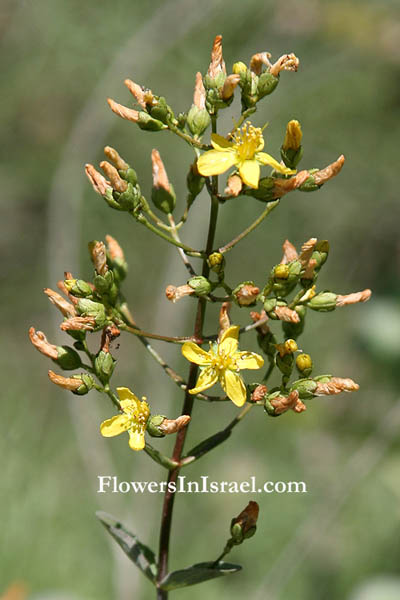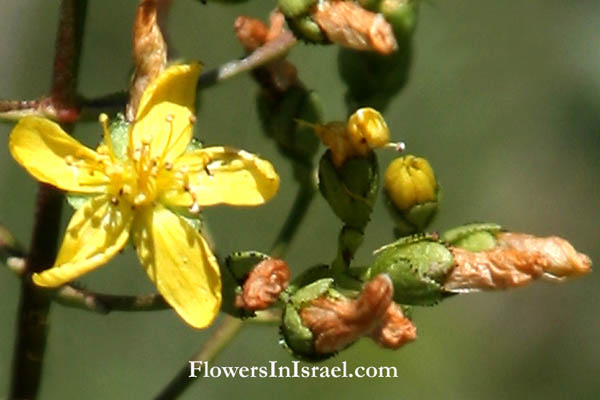Triangular Leaved St John's Wort, Tumble St.John's-wort,
Hebrew: פרע מסולסל, Arabic: العرن مثلث الأوراق
| Scientific name: | Hypericum triquetrifolium Turra | |
| Synonym name: | Hypericum crispum L. | |
| Common name: | Triangular Leaved St John's Wort, Tumble St.John's-wort | |
| Hebrew name: | פרע מסולסל | |
| Arabic name: | العرن مثلث الأوراق | |
| Family: | Hypericaceae, St. Johnswort Family, פרעיים |

|
| Life form: | Hemicryptophyte | |
| Stems: | To 45 cm tall, with tangled branches; both leaves and stems have numerous, tiny, black oil glands | |
| Leaves: | Opposite, entire | |
| Flowers: | Yellow | |
| Fruits / pods: | Dry capsule, which splits to release numerous small seeds | |
| Flowering Period: | May, June, July, August, September | |
| Habitat: | Batha, Phrygana | |
| Distribution: | Mediterranean Woodlands and Shrublands, Semi-steppe shrublands, Shrub-steppes, Montane vegetation of Mt. Hermon | |
| Chorotype: | Med - Irano-Turanian | |
| Summer shedding: | Ephemeral |

Derivation of the botanical name: Hypericum, hyper, above, eikon, picture; from the old practice of placing flowers above an image in the house to ward off evil spirits at the midsummer festival of Walpurgis Night, which later became the feast of St. John held in late June when they are in bloom, and thus took the name of St. John's wort. triquetrifolium, triangular leaved. crispum, closely curled; finely waved. The Hebrew name: פרע, Hypericum, the ‘St. John’s wort’, from פרע, to dishevel the hair. Syrian פרע (= it sprouted), Late Arabic: fara 'a ( =it sprouted).
|